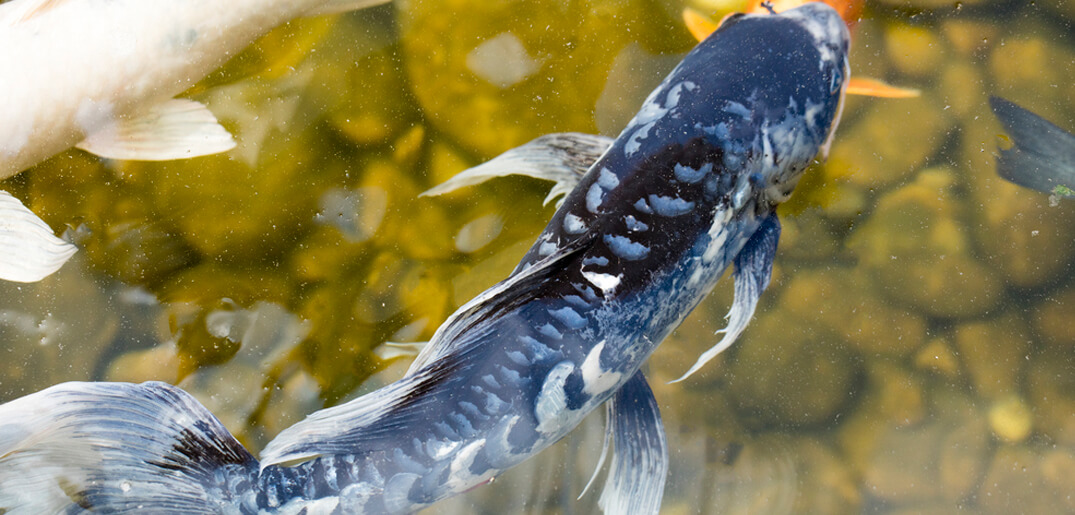When asked to imagine koi fish, most people would remember the vividly-colored ones – the red, orange, yellow and even the white ones. These colors are more eye-catching and certainly have become definitive of what koi fish look like. Only few people would imagine the black koi, and those who do would usually be koi owners who have developed a deeper appreciation of koi over time, and have grown to understand the significance of the black koi. Black koi have a more subtle allure, a mystery that surrounds them, and those who are curious enough to dig deeper will discover their rich significance.
Genealogy Of Black Koi
All koi come from a base stock of koi known as Magoi, which in Japanese and Chinese culture are known as the common carp, which is a black carp. However, Magoi are not true black koi. They usually exhibit a bronze sheen to their color, and they have an easily distinguishable white or orange belly. Truly black koi are a very deep, jet black color, with minimal belly coloring. They are a developed strain of koi called Karasu.
Karasu have been bred in Japan for a long time. “Karasu” means crow, and these particular koi are therefore known as the crows of the koi varieties. In Japanese mythology, the crow is a messenger of divine intervention. This places a special significance on the black koi indeed.
Cultural Perception Of Karasu
The perception of color usually comes hand in hand with cultural upbringing. In many cultures, black is the color of sophistication, sexiness and power. Tuxedos and little black dresses attest to this, and figures of authority such as judges and priests don themselves in black. Black also often has other connotations like death, sadness, mourning, sin and the occult, and sometimes it just means plain bad luck.
However, in Japanese tradition, black has many positive connotations. A black koi in your pond is a source of good luck for you. Some would even say that black koi absorb negative energy, promote a restful and contemplative mood, ease the obstacles in life, and even invite wealth to the life of the owner. On children’s day in Japan, children fly colorful koi flags representing family members, and the black koi represents the father figure, provider and protector. Karasu offer comfort to the owner, collecting up all the bad luck, negative energy and obstacles as it makes it rounds in your pond – who wouldn’t want that?
Choosing Your Karasu
Just like choosing any other koi, follow the usual guidelines for choosing Karasu. Check that the fish has no cuts, scrapes, abrasions, torn fins, red streaks, hazy eyes, missing scales, etc. Next, you want to look out for a sharp and deep black coloration, as jet black as possible. The belly area should be as black as possible too, not too much white or other colors, but in general an orange belly is preferred over white. Fins and tails should be totally black, and it is also preferable to have black around the eyes.
Karasu are easy to care for and can eat all types of color food. They are also voracious eaters and can eat until you get tired of feeding them! They make perfect hand feeding pets for this reason. Keep the treats at hand when you have Karasu in your pond. Typical Karasu live for more than 30 years, and often become family pets due to their long lifespan. As it really stands out from the other brightly colored koi, the Karasu has a strong mysterious appeal, and definitely a beautiful and significant addition to your pond.


 Blog
Blog



